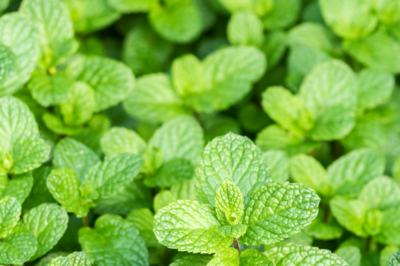Last updated on October 23rd, 2023 at 09:00 pm
While you grow most culinary seasoning herbs from seed, it’s a bit more difficult with peppermint. Sowing takes longer compared to other methods of propagation and is not always crowned with success. What you should consider when sowing.

Where to get the seed for peppermint?
You can get seeds without a variety in the supermarket or hardware store. If you want to grow different varieties of peppermint in the garden, you should ask in garden stores. Sometimes your neighbor can also help out with special varieties.
You can gain your own seeds by allowing peppermint to flower out in the garden and simply shaking out the ripe seeds in the fall.
Pre-growing peppermint on the windowsill
Since peppermint requires relatively high soil warmth to germinate, it makes sense to preplant it on the windowsill starting in February.
To do this, prepare planting containers with growing soil. Do not scatter the seed too densely. Do not cover it, as they are light germinators. Keep the seed nice and moist but not wet. Cover the containers with cling film and air them once a day to prevent mold.
The first seedlings can wait between one and three weeks. Planting is not before mid-May, when the soil has warmed to about 15 to 18 degrees and the plants are large enough.
Sowing in the open
To sow peppermint in the open ground, wait until mid-May. In the growing bed or at the desired planting site, create rows about 30 centimeters apart. Spread the seed thinly.
After emergence, separate the plants to about 15 centimeters apart. Once the peppermint reaches a height of about ten centimeters, place it at a distance of 50 centimeters from other plants in the desired location. You should prepare the soil beforehand:
- Loosen
- Remove compaction
- Refine with sand if necessary
- Pull weeds
- Work in mature compost
Tips & Tricks
Since sowing peppermint can be quite time-consuming and tedious, it’s better to use cuttings for propagation instead. To do this, it often only takes a few stems that you cut from a pre-cultivated plant from a garden supply store and root in a jar of water.


